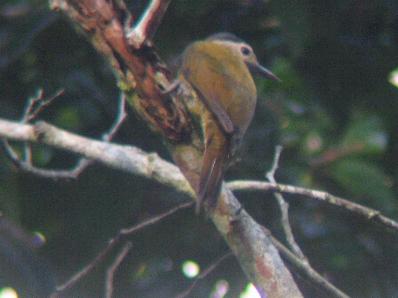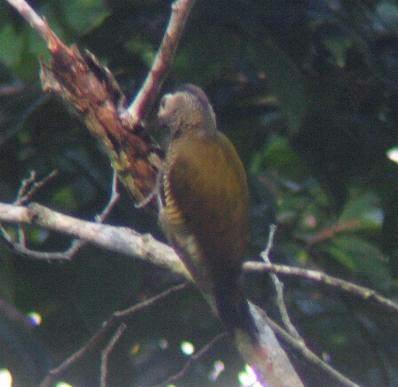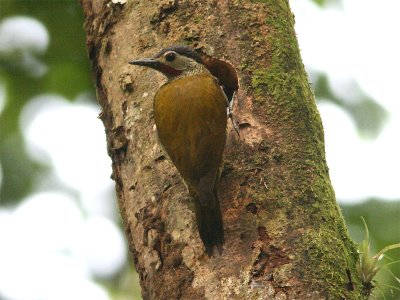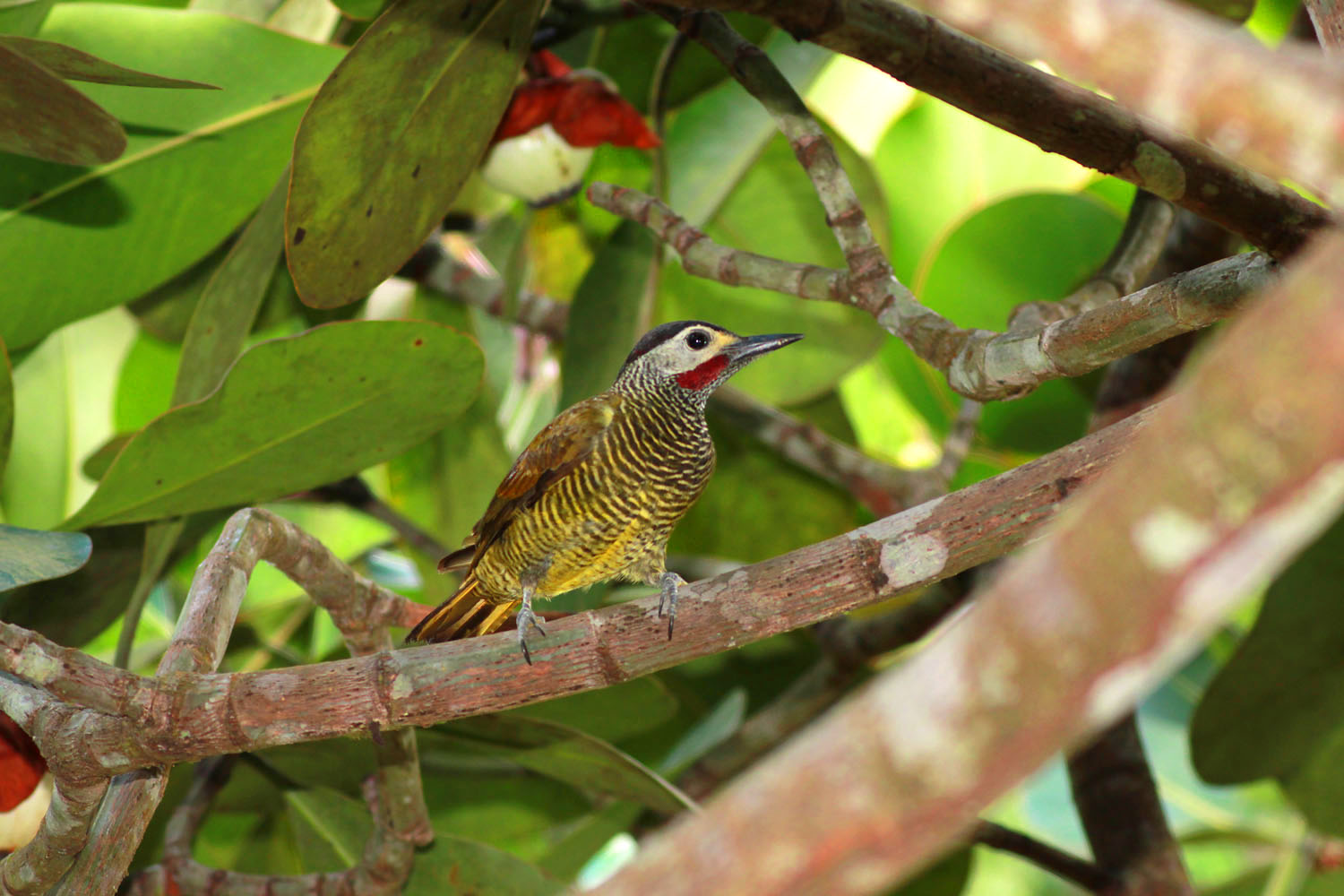 Golden-olive Woodpecker (Colaptes rubiginosus)
Golden-olive Woodpecker (Colaptes rubiginosus)
 Golden-olive Woodpecker (Colaptes rubiginosus)
Golden-olive Woodpecker (Colaptes rubiginosus) |
 |
| Pictures (click on them to enlarge) | ||
|---|---|---|
 © Steven Wytema |  © Steven Wytema |  © Ricardo van Dijk |
 male © Erlan Sleur |  female © Martin Reid |
| Photos of a female Golden-olive woodpecker made by Steven Wytema in the Brownsberg nature park in Suriname in the first half of 2005. At the same place saw Ricardo van Dijk his bird in February 2009 and Erlan Sleur his in June 2013. The males of these woodpeckers have red in their crown. It is a common bird of rainforest above 400 meter, so you can often see it at the Brownsberg. It is also known from the Lelygebergte and the Nassaugebergte and the Tafelberg, all higher then 400 m. Dominiek Plouvier made a video of a female Golden-olive Woodpecker searching for food. |
| Video (click the link or the 'play'-button to see) | ||
|---|---|---|
| Video recording of a Golden-olive Woodpecker © ; |
|
|
||||||||||||||||||||||||||||||||||||||||||||
| Observations through the year | Observations of breeding through the year |
|---|---|
| The 143 reported observations of this bird in Suriname, mainly for the last 50 years up to 2018, have been grouped by month. More birds on one day are counted as one observation. Of course, if the graph should depict the total number of birds seen, the differences between the months could be much more pronounced. | The reported breeding observations of this bird in Suriname. Most observations are about nest with eggs, some about fledglings, or feeding at a nest or the building of a nest. Of the about 5000 nests and eggs found for all species together, about 1/3 comes from the egg collection of Penard between 1896 and 1905. For some reason most collecting then was done in the first half of each year, so the shown distribution does not necessarily reflect the actual breeding preferences. The main dry season in Suriname is reckoned to be from half August to the end of November, the main wet season from half April to half August, but the the timing of begin and end does vary from year to year. Around March a second dry season often occurs. |